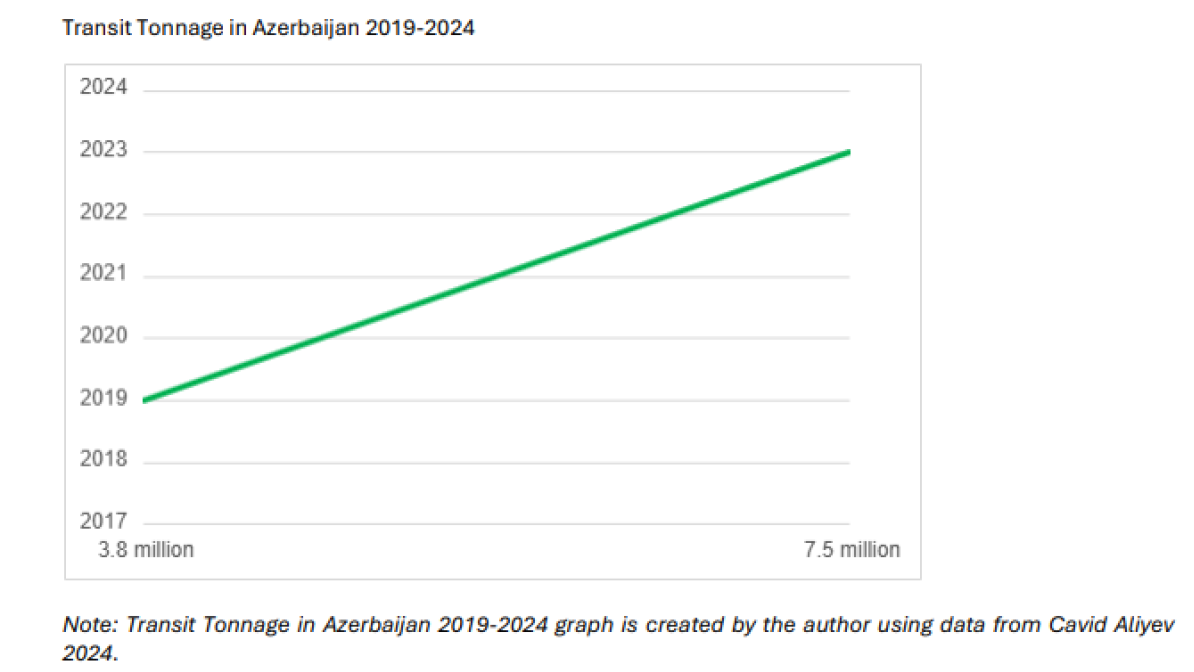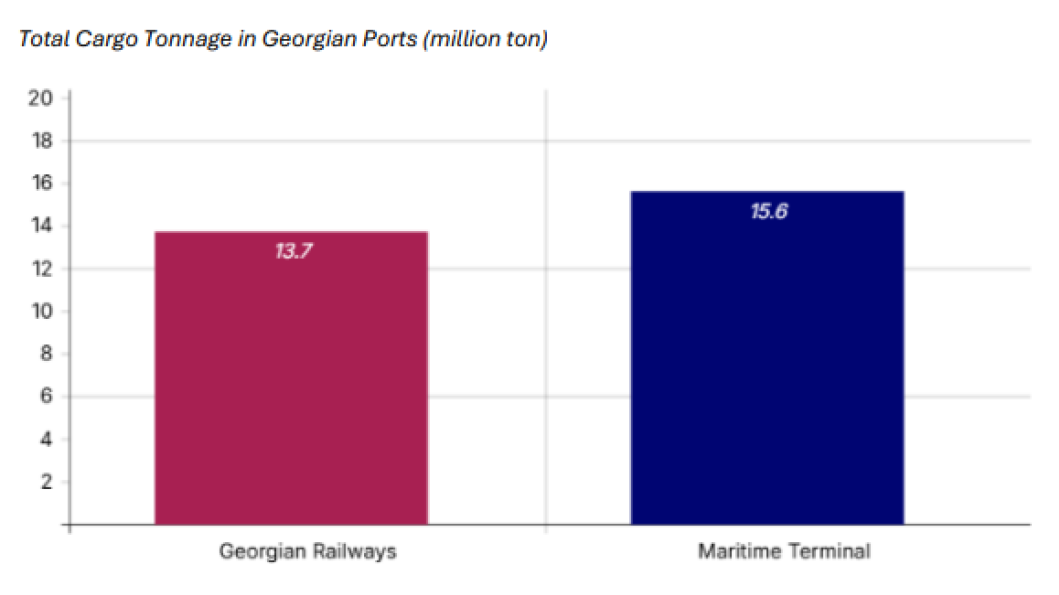AnewZ Morning Brief - 10 December, 2025
Start your day informed with AnewZ Morning Brief: here are the top news stories for the 10th of December, covering the latest developments you need to...
A new study by the Center for Economic and Social Development (CESD) in Baku says the Zangezur corridor could redefine connectivity and trade in the South Caucasus, linking Azerbaijan, Armenia, and Georgia through shared economic interests.
The Zangezur Corridor has emerged as one of the most significant regional initiatives since its inclusion in the U.S.-brokered 2025 peace declaration between Armenia and Azerbaijan. Envisioned as a transport link connecting mainland Azerbaijan to Nakhchivan through southern Armenia, and further to Türkiye and Georgia, the corridor is presented by the study as a new artery of connectivity that can integrate the Caspian and Black Sea basins and revitalise trade across the South Caucasus.
According to the Center for Economic and Social Development (CESD), the project should not be viewed as a purely bilateral undertaking but as part of a wider regional transformation that complements existing infrastructure such as the Baku-Tbilisi-Kars railway and the Middle Corridor. The study emphasises that the corridor’s success will depend on how effectively the participating countries align logistics, customs, and economic policy to maximise shared benefits.
For Azerbaijan, the CESD report highlights that the corridor represents both strategic leverage and economic diversification. By offering a direct and efficient route to Türkiye and beyond, Azerbaijan can significantly reduce transport costs, expand export channels, and strengthen its position as a logistics and trade hub. The study notes that investments in railway modernisation, smart customs systems, and highway upgrades across Nakhchivan, Fizuli, and the Aras Valley are transforming the region into a key node of Eurasian connectivity.

According to the CESD study, Azerbaijan’s transit tonnage nearly doubled between 2019 and 2024, rising from 3.8 million to 7.5 million tonnes. This increase reflects the country’s growing importance as a logistics hub connecting Central Asia, the Caspian Basin, and Europe. The report attributes this sustained growth to state-backed infrastructure investments and reforms aimed at digitalising customs and freight operations, which are laying the groundwork for the Zangezur Corridor’s eventual integration into Azerbaijan’s broader transport network. It adds that these developments reinforce Azerbaijan’s long-term goal of integrating its non-oil economy with international supply chains and digital trade routes.
For Armenia, the study underscores that the Zangezur Corridor could create new commercial and industrial opportunities. Armenia’s economy, traditionally reliant on a limited number of land routes and on re-exports, could gain fresh access to international markets through diversified transit options. The report explains that by integrating into this corridor network, Armenia could attract logistics investment, expand manufacturing capacity, and reduce the costs of trade to both European and Asian destinations.

The CESD study links Armenia’s expanding EU trade volumes to structural shifts in the country’s external balance since 2022. Imports from the EU have nearly tripled, reflecting higher demand for European machinery and consumer goods, while exports have also grown moderately. The study interprets this as a sign that improved connectivity — including integration into the Zangezur corridor — could further amplify Armenia’s access to EU markets and encourage investment in value-added production. The authors stress that such economic opportunities would materialise fully only with transparent customs procedures and continued political stability in the region.
Georgia, while not directly on the corridor, features prominently in the CESD’s regional analysis. The paper observes that shifts in transit dynamics could bring Georgia both challenges and new incentives. With its established port and rail infrastructure along the Black Sea, Georgia can play a complementary role in connecting the corridor to wider maritime networks.

The CESD study highlights that Georgia’s maritime throughput reached nearly 29 million tons in 2024, divided between 13.7 million tons by rail and 15.6 million tons through maritime terminals. This data reinforces Georgia’s continuing advantage as a multimodal logistics hub. The study notes that while some cargo may be rerouted once the Zangezur Corridor becomes operational, Georgia’s ports are expected to remain vital due to their scale, connectivity, and integration with European shipping routes. The study concludes that by strengthening its intermodal capacity and promoting digital trade facilitation, Georgia can maintain and even enhance its role as a logistical gateway between Europe and Asia.
The CESD analysis applies a difference-in-differences model to separate the corridor’s projected effects from wider regional economic shifts. Drawing on trade data from 2020 to 2024, it estimates that the combined export growth of Armenia and Azerbaijan linked to the corridor could outpace Georgia’s by about 25 percentage points. The authors interpret this as evidence that the corridor is already influencing business sentiment, infrastructure planning, and diversification strategies even before its full activation.
In its recommendations, the CESD emphasises the importance of sustained coordination among the three South Caucasus countries. It proposes harmonised customs procedures, shared logistics monitoring systems, and regional cooperation councils to ensure efficient operation and equitable distribution of transit revenues. The study also urges governments to prioritise diversification of exports: Armenia through expanded manufacturing, Azerbaijan through non-oil industries such as agriculture and processing, and Georgia through services and logistics.
The report warns that the corridor’s potential could be affected by external risks such as geopolitical uncertainty or global market volatility. To mitigate such risks, it recommends building flexible transport systems, alternative routing strategies, and stronger regional contingency planning. Crucially, it frames trust-building measures, stable regulatory environments, and institutional cooperation as the foundation for lasting success.
In conclusion, the CESD study characterises the Zangezur Corridor as far more than a transport project. It is described as a practical test of whether the South Caucasus can convert its geography into a platform for peace and shared prosperity. The paper finds that anticipation of the corridor has already reshaped trade flows and investment patterns across the region, demonstrating its transformative potential.
The authors conclude that the long-term benefits will depend on diplomatic pragmatism and a shared economic vision. By viewing the corridor as a cooperative enterprise rather than a competitive one, Azerbaijan, Armenia, and Georgia can position the South Caucasus as a fully connected and interdependent region. If successfully implemented, the study argues, the Zangezur Corridor could indeed fulfil its description as the Trump route for international peace and prosperity — a route where trade, connectivity, and diplomacy converge to deliver lasting regional stability.
Authorities in Japan lifted all tsunami warnings on Tuesday following a strong 7.5-magnitude earthquake that struck off the northeastern coast late on Monday, injuring at least 30 people and forcing around 90,000 residents to evacuate their homes.
Scores of demonstrators gathered outside the Norwegian Nobel Institute in Oslo Tuesday (9 December) to protest against the awarding of this year’s Nobel Peace Prize to Venezuelan opposition leader Maria Corina Machado.
Pressure is mounting between Venezuela and the United States as both nations emphasise military preparedness and strategic positioning.
Tehran has protested to Washington because of the travel ban on its football team delegation as well as Iranian fans who would like to travel to the United States for the upcoming World Cup matches in 2026.
Paramount Skydance (PSKY.O) has launched a $108.4 billion hostile takeover bid for Warner Bros Discovery (WBD.O). The escalation follows a high-stakes battle that had appeared to end last week when Netflix secured a $72 billion deal for the studio giant’s assets.
Türkiye’s Minister of Energy and Natural Resources, Alparslan Bayraktar, outlined the country’s energy and gas sector developments at the 15th Türkiye Energy Summit in Istanbul, moving away from its dependence on Russian energy.
A second aid ship carrying 10,080 tents provided by Türkiye's Disaster and Emergency Management Authority (AFAD) is on its way after departing from Mersin International Port in the south of the country on 6 December to help address the ongoing humanitarian crisis in Sudan.
Iran and Saudi Arabia reiterated their commitment to enhance ties following a joint meeting with China in Tehran on Tuesday to follow up on implementation of the 2023 Beijing Agreement which resulted in resumption of their diplomatic relations after eight years.
Kazakhstan has begun redirecting part of its crude exports, sending oil from the Kashagan field to China for the first time.
Azerbaijan and Slovakia are set to strengthen bilateral ties and cooperation as President Ilham Aliyev meets Richard Raši, Speaker of the National Council of the Slovak Republic on Tuesday, 9 December.
You can download the AnewZ application from Play Store and the App Store.

What is your opinion on this topic?
Leave the first comment